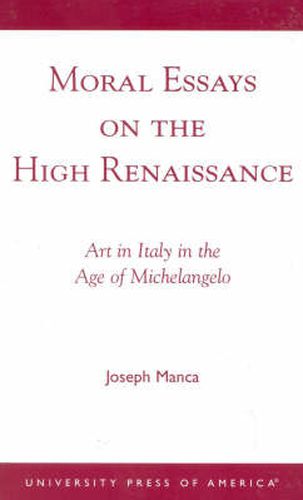Readings Newsletter
Become a Readings Member to make your shopping experience even easier.
Sign in or sign up for free!
You’re not far away from qualifying for FREE standard shipping within Australia
You’ve qualified for FREE standard shipping within Australia
The cart is loading…






Moral Essays on the High Renaissance consist of critical essays on the art and thought of major figures of sixteenth-century Italian Renaissance art. Looking at these artists from an ethical point of view, these provocative essays set out to discover and describe the moral basis of High Renaissance art. Important areas of focus include the paintings and sculpture of Michelangelo, the artistic style and sense of the life of Raphael, and the ethical approach of the Cinquecento biographer Giorgio Vasari. Consideration is given also to the worldly, graceful art of Leonardo da Vinci and the painterly hedonism of the Venetians. The volume concludes with a semi-autobiographical essay that restates the underlying moral principles behind the earlier chapters. The book is well illustrated with numerous black-and-white reproductions of important works of High Renaissance art and architecture.
$9.00 standard shipping within Australia
FREE standard shipping within Australia for orders over $100.00
Express & International shipping calculated at checkout
Moral Essays on the High Renaissance consist of critical essays on the art and thought of major figures of sixteenth-century Italian Renaissance art. Looking at these artists from an ethical point of view, these provocative essays set out to discover and describe the moral basis of High Renaissance art. Important areas of focus include the paintings and sculpture of Michelangelo, the artistic style and sense of the life of Raphael, and the ethical approach of the Cinquecento biographer Giorgio Vasari. Consideration is given also to the worldly, graceful art of Leonardo da Vinci and the painterly hedonism of the Venetians. The volume concludes with a semi-autobiographical essay that restates the underlying moral principles behind the earlier chapters. The book is well illustrated with numerous black-and-white reproductions of important works of High Renaissance art and architecture.